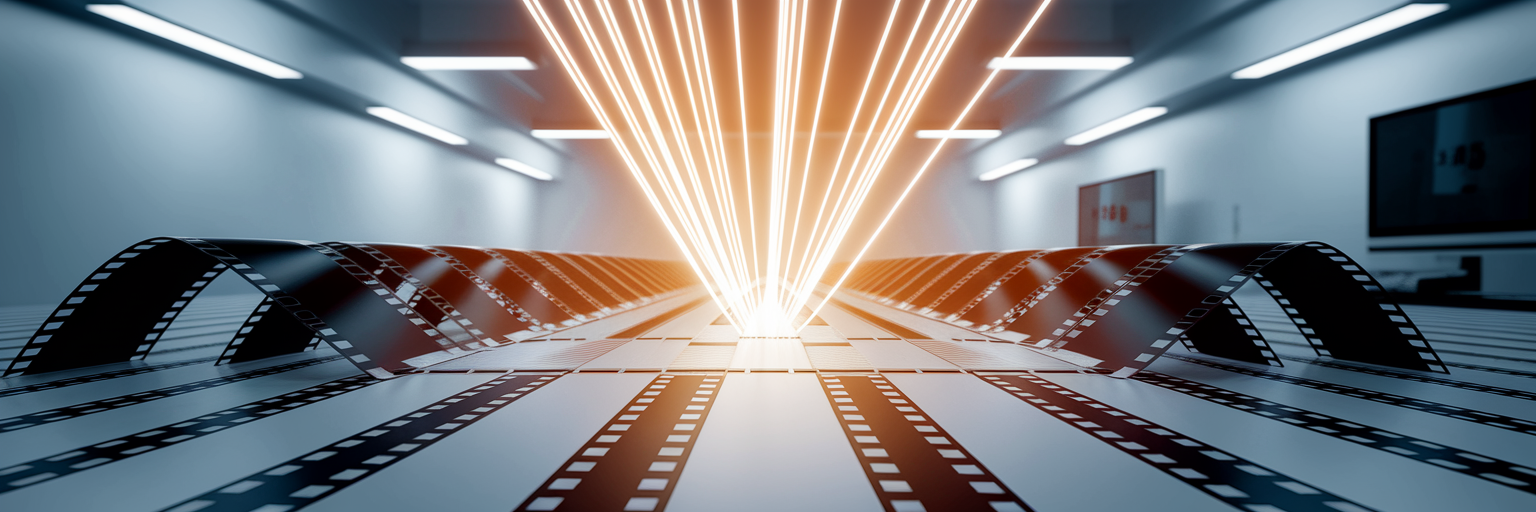The Growing Demand for Faster Content Creation
The pressure on creators for platforms like TikTok and Instagram Reels is undeniable. Audiences and algorithms reward consistency, creating a feeling of being on a perpetual content treadmill. You film a great idea, but then comes the part no one sees: the hours spent hunched over a timeline, meticulously cutting out every pause and "um," manually typing and timing captions, and endlessly scrolling through music libraries for the right track.
This repetitive, non-creative work is the silent burnout machine for many creators. It drains the energy that should be going into the next great idea or engaging with your community. The challenge of short form video creation isn't just about having ideas; it's about having the time and mental space to execute them without getting bogged down in technical details. This constant cycle is a common topic of discussion, and you can find more perspectives on navigating it in our creator-focused blog.
This is where AI enters the picture, not as a replacement for your creativity, but as a highly efficient workflow assistant. Imagine a tool that absorbs the most tedious post-production labor. It frees you to dedicate your best energy to what truly matters: your performance, your story, and your unique voice.
Automating Tedious Post-Production Tasks

With that freed-up energy, the first place you will notice a difference is in the automation of post-production. Instead of spending hours on repetitive edits, AI tools can condense that work into minutes. This is not about creative compromise; it is about reclaiming your time by delegating the tasks a machine can do faster and more accurately. Think about how to automate video editing in these specific ways:
- Smart Trimming and Scene Detection: We all know the feeling of listening back to our own recording and cringing at the long pauses or filler words. AI can automatically identify and remove this dead air, along with stumbles like "um" and "ah," creating a tight, engaging edit in seconds.
- Automatic Transcription and Captioning: Manually transcribing and syncing captions is one of the most time-consuming parts of editing. AI generates accurate, time-synced captions almost instantly, which is essential for mobile viewers who often watch with the sound off.
- Audio Enhancement: Nothing ruins a great video faster than poor audio. AI can remove distracting background noise, from a humming air conditioner to street traffic, and automatically level your audio for a clean, professional sound.
These automations are central to modern editing platforms, and you can see a breakdown of these AI-powered features and how they function. The impact is immediate. A post-production process that once took an entire afternoon can now be completed before your coffee gets cold.
| Task | Traditional Method (Estimated Time) | AI-Assisted Method (Estimated Time) |
|---|---|---|
| Trimming Silences & Filler Words | 30-60 minutes | 1-2 minutes |
| Generating & Syncing Captions | 45-75 minutes | 2-5 minutes |
| Color Grading & Correction | 15-30 minutes | 1-3 minutes (with AI suggestions) |
| Finding & Syncing Background Music | 20-40 minutes | 5-10 minutes (with AI recommendations) |
Note: Time estimates are based on a typical 2-3 minute short-form video and may vary based on content complexity and creator experience. The data highlights the significant time savings achieved by automating repetitive tasks.
Enhancing Visuals with Intelligent Effects
Beyond just saving time, AI tools are also making high-end visual effects accessible to everyone. What once required expensive software and years of training can now be achieved with a few clicks, allowing solo creators to produce visually compelling content that stands out in a crowded feed.
This is not about applying generic filters. It is about intelligent enhancement that elevates your original footage. Here are a few ways AI is changing the visual game:
- AI-Driven Color Grading: Instead of manually tweaking saturation and contrast, AI can analyze the content of your video and suggest color presets that match its mood. A travel vlog might get a vibrant, sunny look, while a dramatic monologue could be given a cooler, more cinematic tone.
- Generative Video AI: This is where things get truly interesting. With generative video AI, you can use simple text prompts to create custom animated backgrounds or overlays. Platforms like Adobe Firefly now allow creators to turn a static image into a short, dynamic video clip, a powerful tool for social media posts.
- AI Style Transfer: Want your video to look like a moving oil painting or a vintage comic book? AI style transfer can apply complex artistic looks to your footage instantly, giving you a unique aesthetic without any manual design work.
The result is a democratization of quality. You no longer need a production team to create professional-looking content. These tools empower you to bring your most ambitious visual ideas to life, right from your laptop.
From Technical Editor to Creative Storyteller

The most profound shift that AI enables is not technical but mental. By offloading the tedious parts of editing, you free up cognitive energy to focus on what really connects with an audience: narrative, performance, and authenticity. You move from being a technical editor to a creative storyteller. This new paradigm is at the core of modern creation, and tools like Code Reels are built to facilitate this exact shift.
This creative freedom extends beyond post-production. The right tools for AI for content creators can even help in the ideation phase, analyzing trends to suggest video topics or helping you draft compelling hooks that grab viewers in the first three seconds. This is not just theoretical; a Teachable blog post notes that creators using these tools report reducing their editing time significantly, directly translating to more time for creative development.
Furthermore, AI makes content repurposing incredibly efficient. Imagine having an AI that can watch your hour-long podcast or YouTube video, automatically identify the most engaging moments, and reformat them into a dozen different short clips for Reels and TikTok. With the ability to repurpose video with AI, you can maximize the reach of every piece of content you create with minimal extra effort. AI becomes a partner that removes friction, allowing your unique voice to be the central focus.
The Modern Creator's Workflow in Practice
Let’s make this tangible. The old workflow might look like this: you spend Monday afternoon filming, then all of Tuesday editing, trimming, captioning, and color correcting. By the time you post, you are already exhausted and behind on your next idea. The trend you wanted to jump on is already fading.
Now, consider the new workflow with AI video editing tools. You film on Monday afternoon. That same evening, you upload your footage, and the AI automatically trims silences, adds captions, and enhances the audio. You review the edit, apply an AI-suggested color grade, and your video is ready in under an hour. This efficiency is not just about saving time; it is about opportunity. It allows for a consistent posting schedule that keeps your audience engaged. It also encourages creative experimentation. When a video only takes an hour to produce, you are more willing to test new formats and ideas, reducing the fear of failure and the risk of burnout.
In the fast-moving world of social media, this speed is a strategic advantage. The ability to quickly produce a high-quality video in response to a viral sound or challenge keeps you relevant. Adopting this modern workflow is more accessible than ever, with straightforward pricing models designed for individual creators.
Navigating the Challenges of AI-Powered Creation
While AI offers incredible advantages, it is important to approach it with a balanced perspective. Like any powerful tool, it comes with potential pitfalls that creators should be mindful of. Acknowledging these challenges is the first step toward using AI effectively and responsibly.
- The Risk of Inauthenticity: The biggest danger is over-reliance. If every creator uses the same AI presets and automated edits, content can start to feel generic and lose its personal touch. The key is to use AI for efficiency, not as a substitute for your unique style and perspective.
- Ethical Considerations: As AI becomes more powerful, transparency is crucial. Being open with your audience about when and how you use AI-generated content helps build trust. It is also important to use the technology responsibly and ethically.
- The Evolving Toolset: The field of AI is changing quickly. What is state-of-the-art today might be standard tomorrow. This requires a commitment to continuous learning to stay current with the best tools and techniques.
These challenges are not reasons to avoid AI, but rather guideposts for using it wisely. The goal is not to let the machine take over, but to form a partnership where technology handles the grunt work, leaving you free to do what only a human can: create, connect, and tell compelling stories. Ultimately, the goal is to pair human creativity with machine efficiency, a philosophy that drives the team behind these tools.
